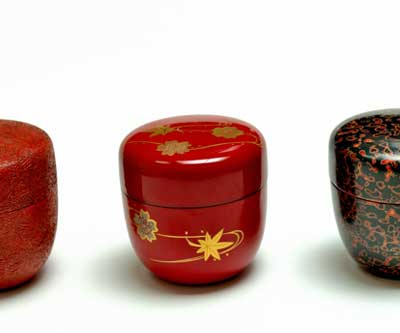Today, on one of the hopefully last cold days of the year, I sat in front of the fireplace and read The Book of Tea by Kakuzo Okakura.
In my own reading of "The Book of Tea," I found myself fascinated by the profound tranquility and almost romantic transfiguration that Kakuzo Okakura attributes to the tea ceremony. It's as if every sip of tea is not only an invitation to a moment of stillness, but also to a deeper connection with the history and traditions that permeate each teacup.
For me personally, Okakura's emphasis on simplicity and natural beauty revealed a sense of romance that transcends the aesthetic. There is a certain romanticism in the idea that in the deliberate execution of the tea ceremony, in the care and attention paid to every detail, an antidote to the superficiality of the modern world can be found. Consciously slowing down, consciously breathing, and consciously savoring—all of this leads to an intimacy with the moment that has become rare in today's fast-paced world.
The world described by Okakura, in which tea is more than just a beverage but an artistic and spiritual practice that nourishes body and soul, strikes me as a surprisingly romantic notion. The tea ceremony becomes a poetic act that touches not only the senses but also the soul. In the quiet moments that tea offers, I find a rare peace and a connection to nature and myself that is often lost in the hustle and bustle of everyday life.
For me, Okakura's "The Book of Tea" is not only an immersion into Japanese culture, but also a personal invitation to find romance in the everyday, to appreciate the beauty in simplicity, and to view life with a gentler, more thoughtful attitude. In every sip of tea, I taste the wisdom of centuries, a gentle reminder that truth often lies in simplicity.
1. The Cup Room Ideal: This introductory chapter sets the philosophical framework of the book and describes how the tea ceremony serves as a kind of miniature cosmos in which ideals of beauty, simplicity, and harmony manifest. Okakura discusses how the cup room, a space specifically designated for the tea ceremony, is a place of cultural purification and aesthetic appreciation.
2. The Schools of Tea: Okakura provides a historical overview of the development of various tea schools in Japan and how they have shaped the art and practice of the tea ceremony. He discusses the philosophical differences between the schools and how they differ in the execution of the ceremony.
3. Taoism and Zenism : This chapter explains the deep connection between the tea ceremony and the philosophical teachings of Taoism and Zen Buddhism. Okakura discusses how these philosophical currents have influenced the simplicity and depth of the tea ceremony and how they contribute to transforming the tea-drinking experience into a meditative practice.
4. The Tea Masters: Here, Okakura portrays some of Japan's most famous tea masters, whose influence on the tea ceremony is still felt today. He recounts their life stories, their artistry, and their philosophical influence on the ceremony.
5. The Art of Tea: Okakura describes the various artistic elements that come together in the tea ceremony, including the architecture of teahouses, ceramics, flower arrangements, and even calligraphy. This chapter emphasizes how the tea ceremony represents a holistic artistic experience.
6. Flowers: In this chapter, Okakura explores the significance of flowers in the tea ceremony. He considers how flower arrangements are not merely decorative but also convey philosophical and aesthetic messages that harmonize with the seasons and the natural environment.
7. Tea Masters: The final chapter summarizes the teachings of the great tea masters and reflects on how their wisdom and ways of life can be applied outside of the tea ceremony, in a broader cultural and personal context.
Each of these chapters offers deep insights not only into the processes and technical aspects of the tea ceremony, but also into its spiritual and philosophical significance. In his writings, Okakura combines the historical and cultural background with a deeper, almost meditative contemplation of the practice. This makes "The Book of Tea" a rich resource for anyone interested in the intersection of culture, art, and spirituality.
You can buy the book here: Amazon




Leave a comment
This site is protected by hCaptcha and the hCaptcha Privacy Policy and Terms of Service apply.